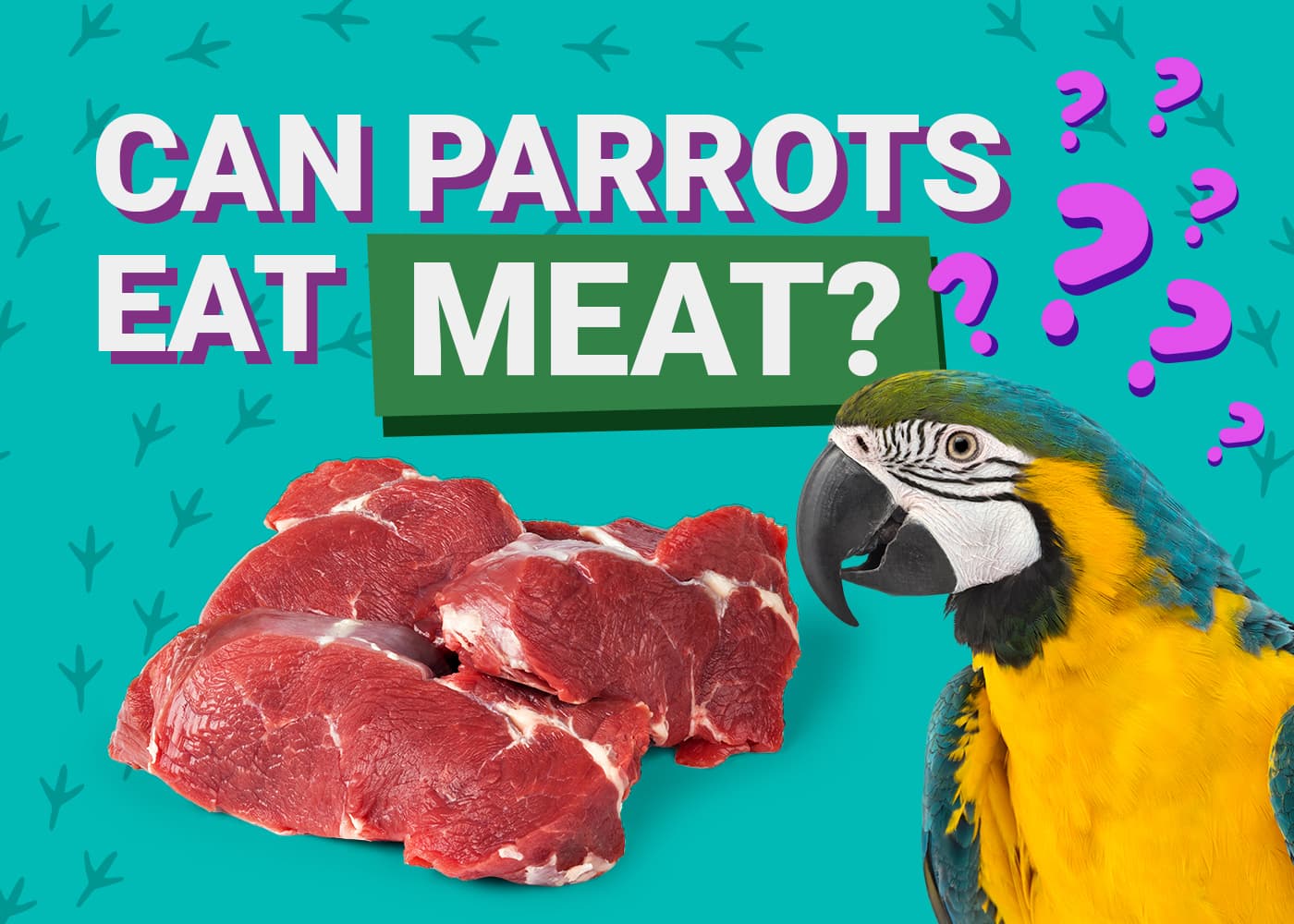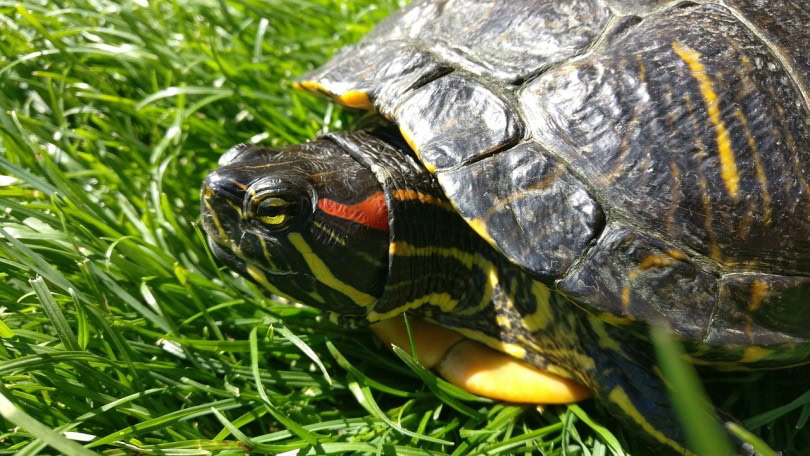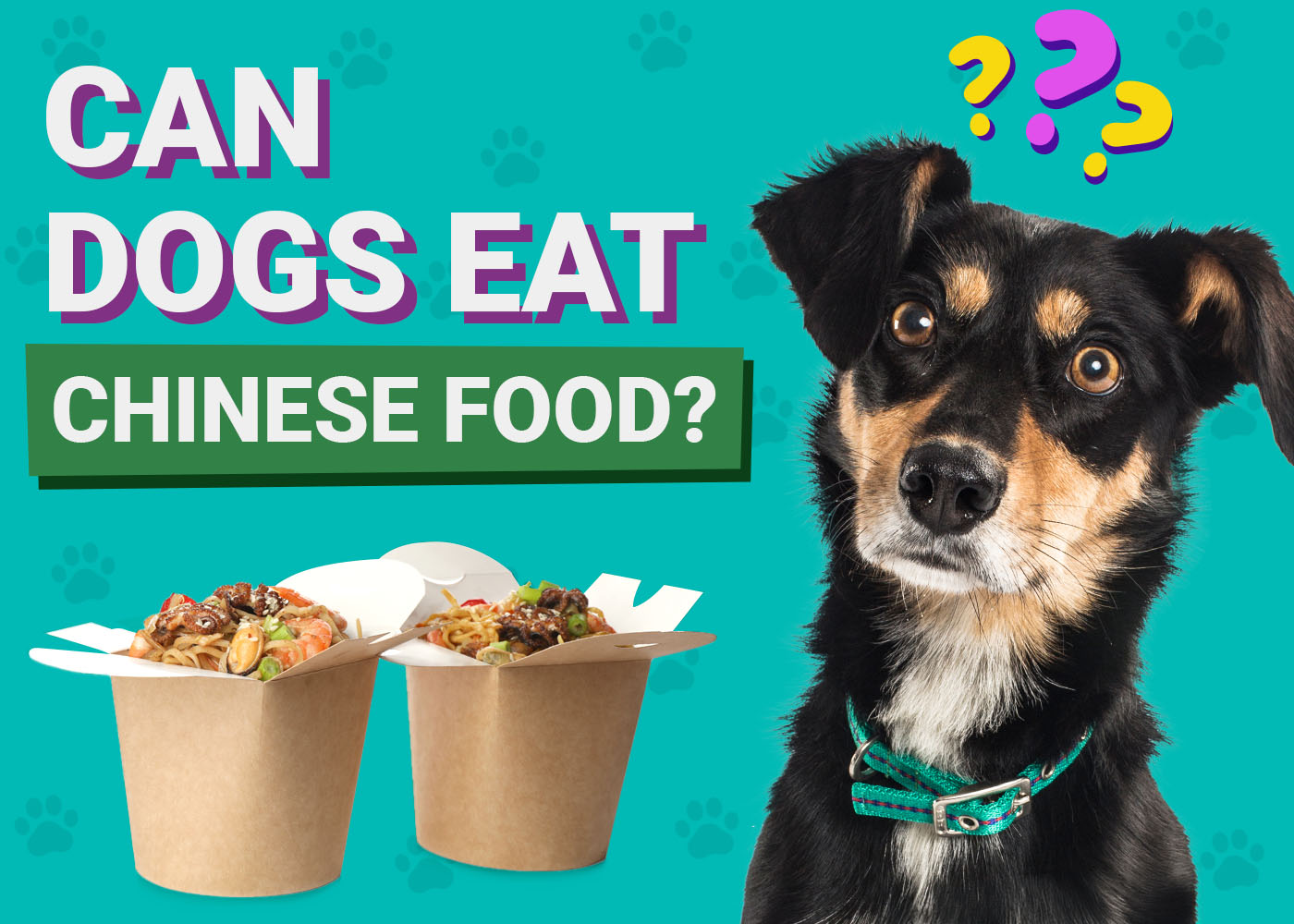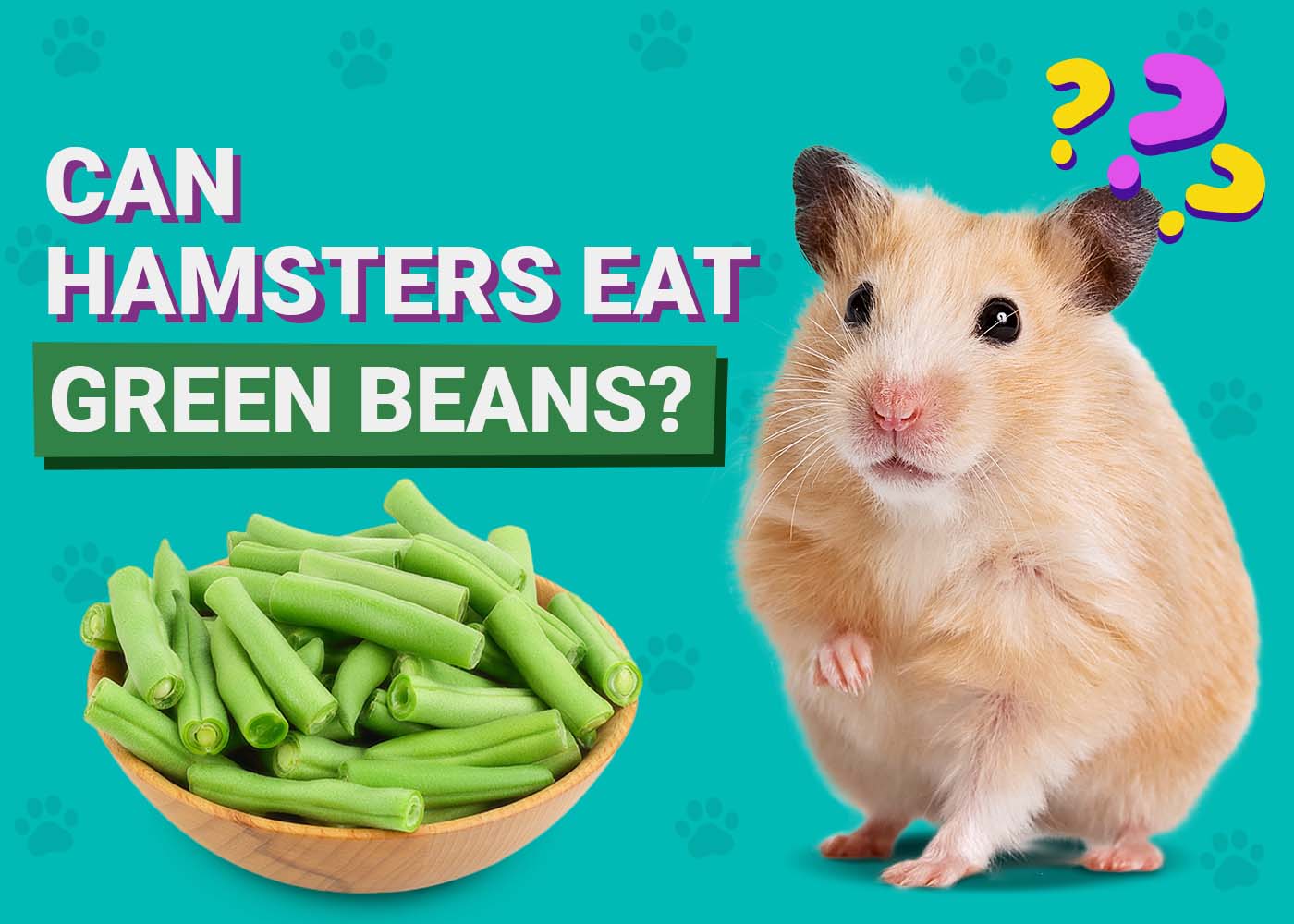VET APPROVED

The information is current and up-to-date in accordance with the latest veterinarian research.
Learn more »Click to Skip Ahead
If your curious parrot is eyeing your steak or chicken dinner, you may be wondering if you can share with your feathered companion. Before you cut a piece, you’ll want to know if it’s safe and healthy for your bird’s diet.
Can parrots eat meat? Though meat isn’t part of the parrot’s natural diet, parrots are omnivores, meaning they can digest both animal protein and plant matter. However, a wild parrot will usually obtain their protein from legumes, beans, and nuts, not from meat. While your bird may enjoy the treat of having a piece of juicy steak once in a while, they should only have meat in moderation.

Do Parrots Need To Eat Meat?
In the wild, parrots live on nuts, flowers, fruit, seeds, and insects. Nuts and seeds are their favorite food, and their strong beaks and jaws are designed for cracking nutshells to get the seeds.
Parrots need plenty of protein for development and to maintain their physical health and condition. Although meat is high in protein, it’s not a natural food for parrots, and they get most of their protein from eating a varied diet of seeds, nuts, and some vegetables.
Mimicking a wild parrot’s diet is difficult, if not impossible to do with pet birds, and the key to ensuring they get all the nutrients they need is through variety. Feeding your parrot on nothing but commercial seed or pellet mix is almost certainly going to lead to nutrient deficiencies, as well as some serious boredom for your pet. The ideal parrot diet should consist of commercial food as a base, plenty of fresh vegetables, nuts, eggs, and legumes, plus some fresh fruit as a treat. By following this guide, your parrot won’t need meat in their diet, but that doesn’t mean they can’t enjoy some on occasion.
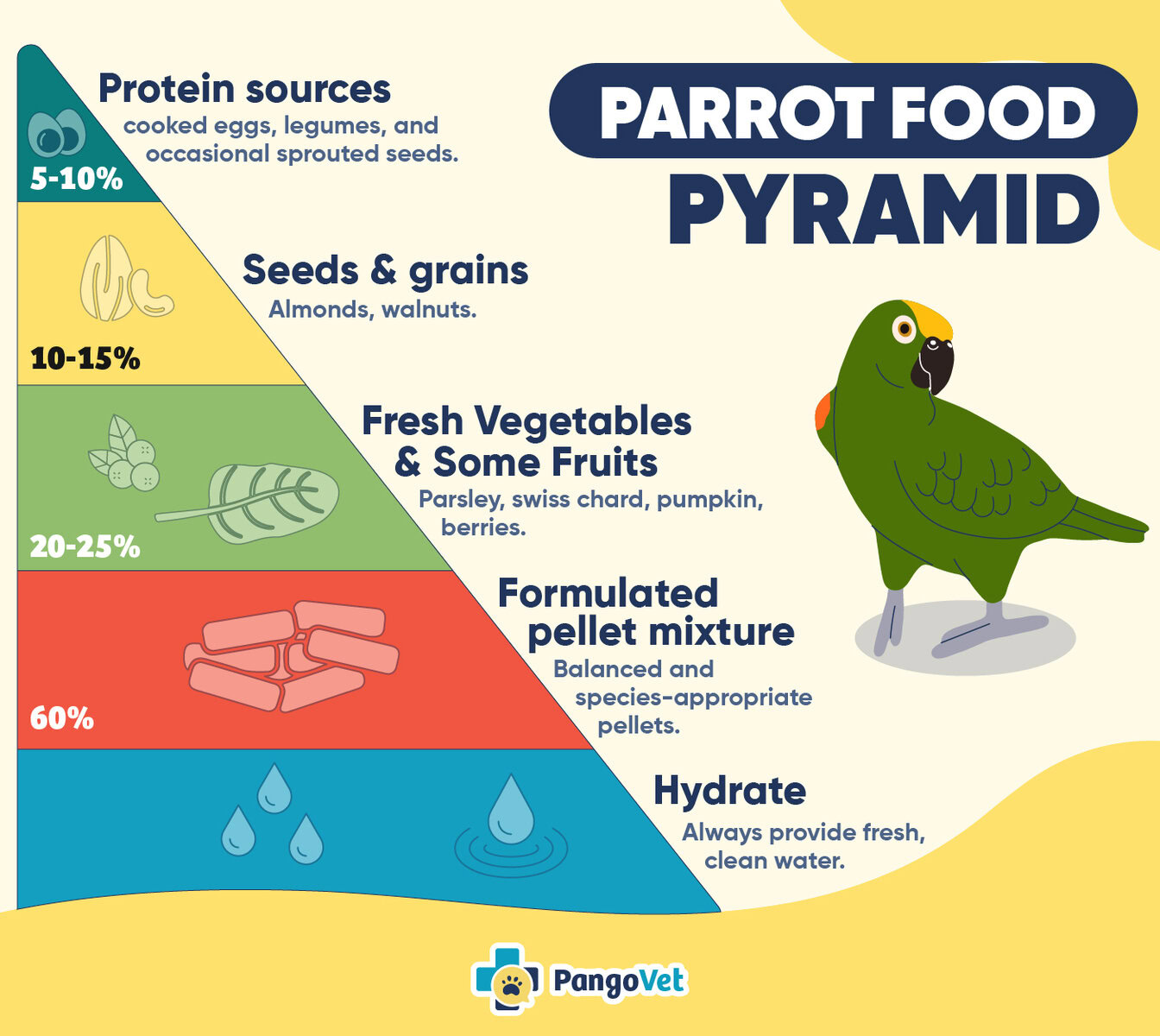
How Much Meat Is Safe for Parrots?
Many parrots will jump at the chance to enjoy a taste of whatever meaty delight you’re eating, but you cannot allow them to choose their own portion size. Their digestive system is not designed for a carnivore diet, and too much meat is likely to wreak havoc on their gastrointestinal tract.
With so many different sizes of parrots out there, it’s difficult to give an exact measure of how much meat is appropriate, but a sensible measure would be to only offer them a chunk of meat that is the same size as a piece of fruit you would give as a treat.
Meat should be cooked and free from seasoning or added salt.
Potential Health Risks of Feeding Meat
Meat is high in saturated fats, cholesterol, and calories, and allowing your parrot to indulge too much may expose them to health conditions like heart disease or high cholesterol. Birds are also susceptible to fatty liver disease, a condition in which excess fat is stored in the liver.
Adding too much protein can cause kidney damage, so be careful of supplementing meat with a commercial or homemade diet high in other protein sources.
What Meat Can My Parrot Eat?
While you don’t need to go out and purchase any meat specifically for your parrot, it’s helpful to know which forms are going to be safe for them to share from your plate.
- Poultry: You might think that offering bird meat to a bird seems a bit like cannibalism, but really, it’s no different from a mammal predator eating another mammal. Chicken, turkey, and duck are lean meats that add a lot of protein to your parrot’s diet without adding a lot of fat. Choose roasted or grilled poultry with no sauces, breading, or added oils.
- Beef: Make sure you remove any excess fat and cook to a minimum of medium before offering it to your pet.
- Fish: Fish is high in healthy fats that aren’t commonly found in a plant-based diet. You can give your parrot low-mercury fish options like trout, mackerel, sardines, and anchovies.
Meats to Avoid in Your Parrot’s Diet
Nothing spicy, deep fried, breaded, seasoned, or smoked. Plain baked, boiled, steamed, or broiled is the safest option for your parrot.
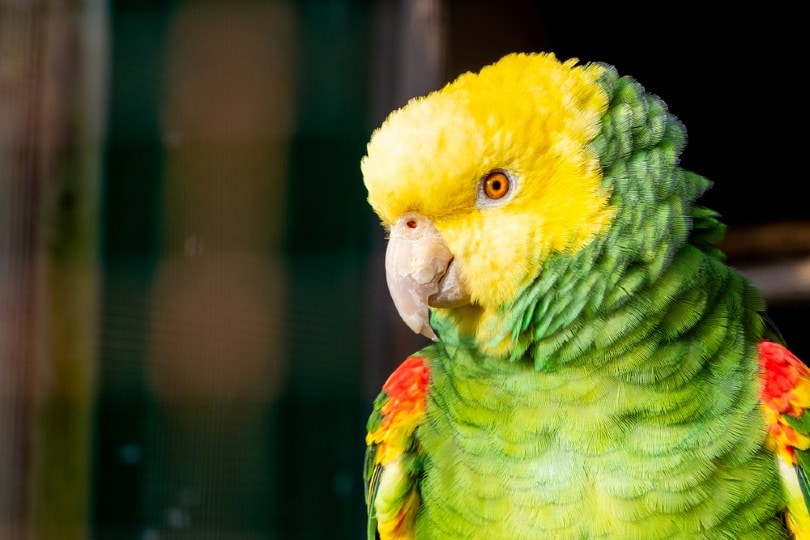
Never feed cured meats or cold cuts, such as bacon, sausage, and salami, to your parrot. These meats are high in fat, sodium, and nitrates. You should also avoid meats with fillers, such as ham or bologna.
Pork can sometimes contain parasites that could be harmful to you and your parrot, and although cooking usually eliminates the risk, the small size of these birds could make them more susceptible, so it’s not worth taking the risk.
Finally, make sure all the meat you give your parrot is fully cooked. Raw meat can contain dangerous bacteria, such as salmonella, that can make your bird sick.
What Other Foods Should Be Avoided in Parrot Diets?
Just like dogs and cats, we like to share table food with our pets and don’t realize how dangerous some foods can be.
Numerous human foods are toxic to parrots and other birds, such as onions, garlic, mushrooms, chocolate, and avocado. You should also avoid processed foods that are high in sugar and grains, such as candy, bread, cookies, and alcohol.
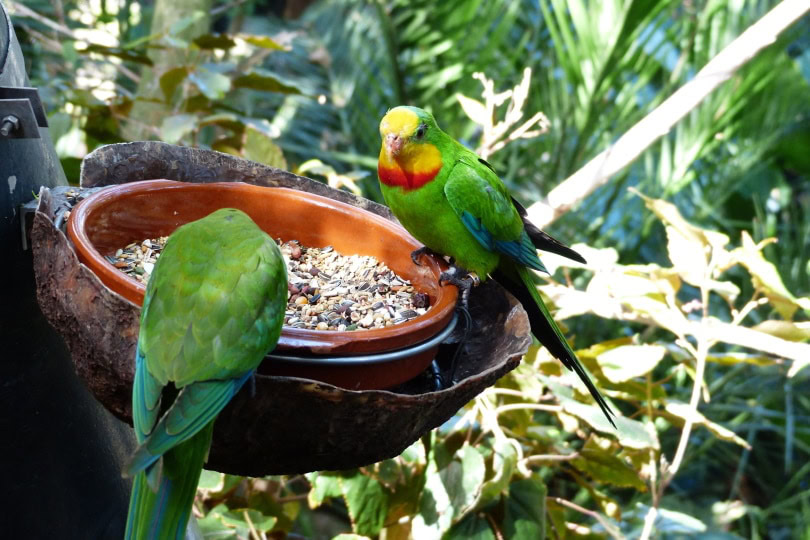

Conclusion
The diet of a wild parrot is extremely varied and will depend on the species of the bird, as well as what is available in their diet. Some parrots have adapted to eating very specific types of foods, while others have embraced a more omnivorous diet.
It can be very difficult to simulate a wild parrot diet, but we can provide our pets with plenty of variety, and by doing so, ensure their nutritional needs are being met. Meat is not something that parrots would normally eat, nor should they need to consume it, but there are plenty of parrots that would be glad to be offered a small taste.
If you want to give your parrot some meat as a treat, make sure it’s plainly cooked and free from seasonings, oils, or any other additives that could put your pet at risk. If you have any doubts about offering meat to your parrot, the simple solution is to just not. They don’t need to eat meat. Just make sure you are providing them with an interesting and varied diet that provides them with everything they need to stay healthy, as well as some enrichment to prevent boredom.
Looking for more parrot diet tips? Here are some must-reads:
Featured Image Credit: Hans Braxmeier, Pixabay
